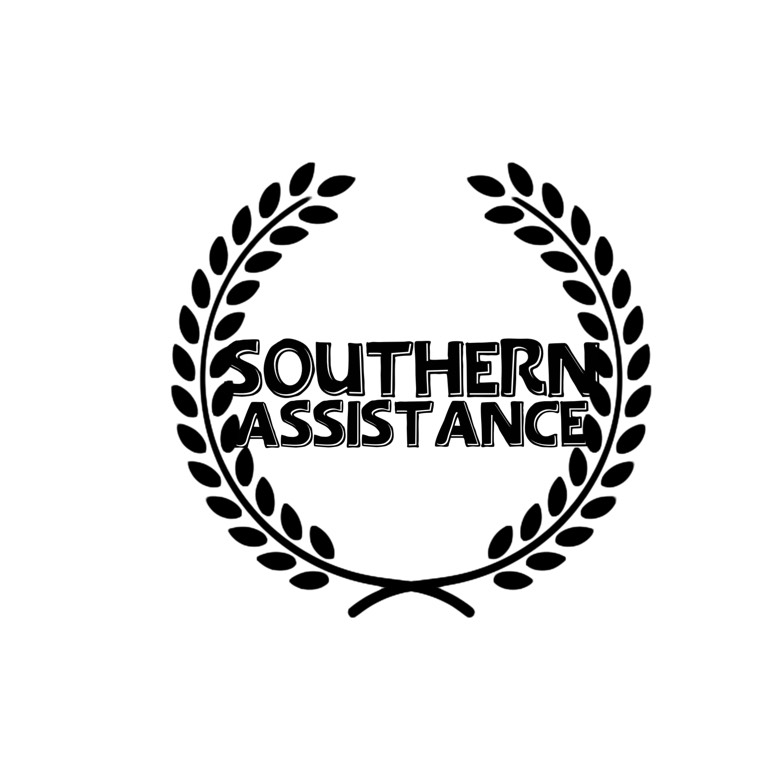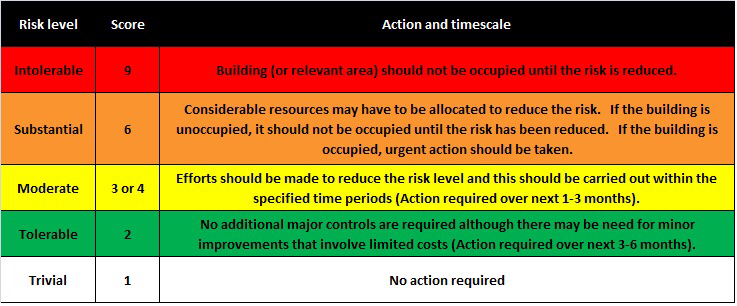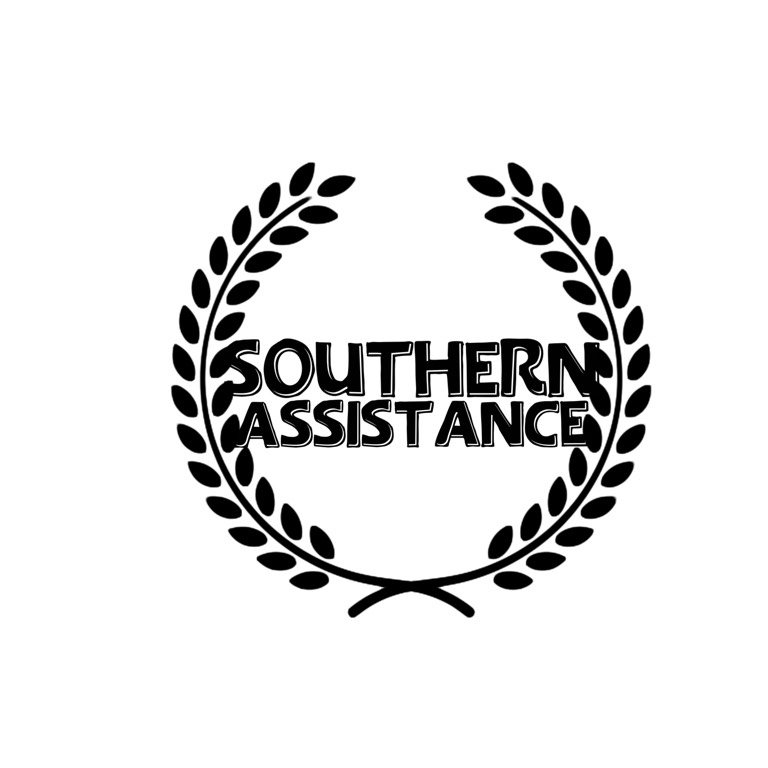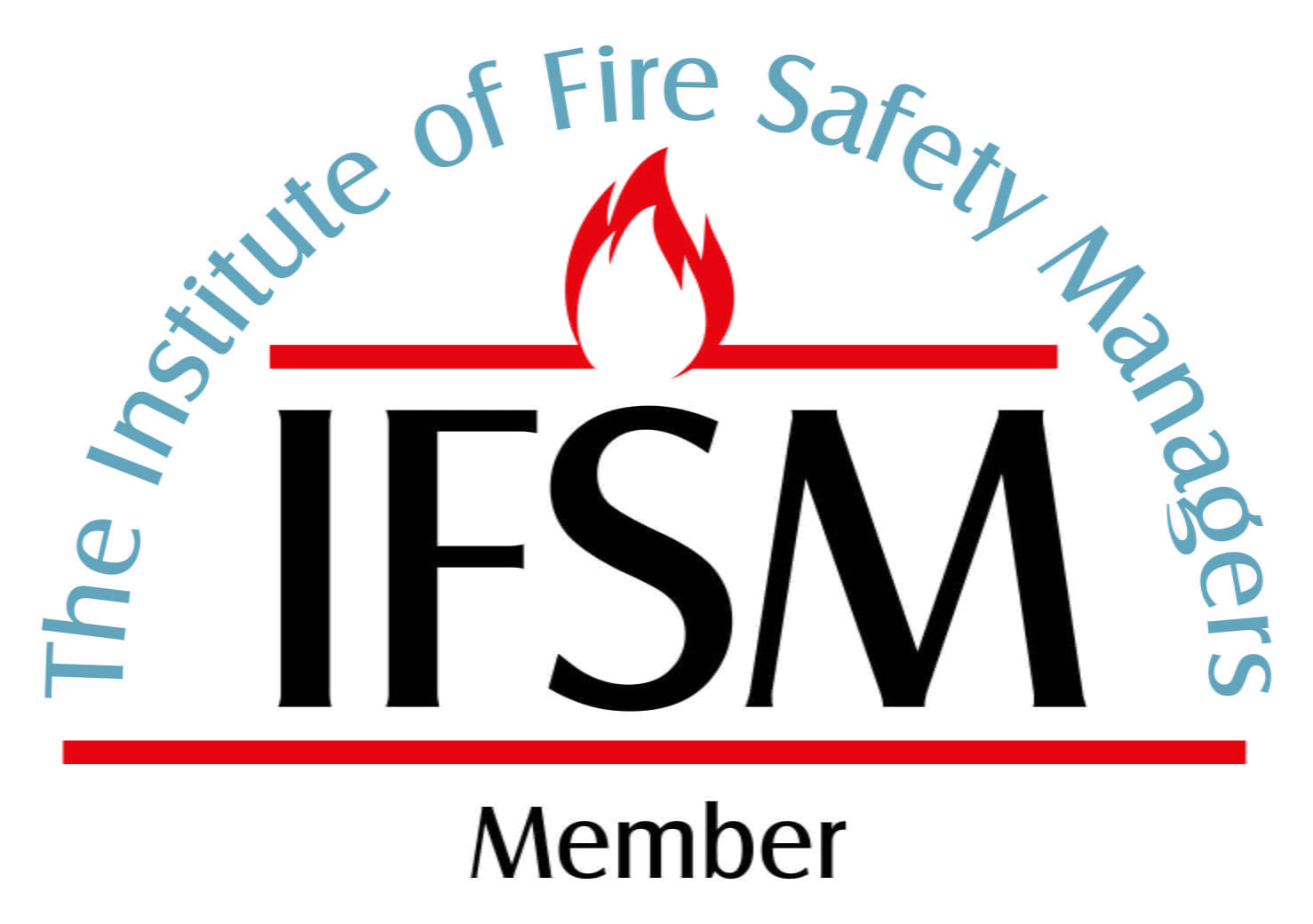Information
-
Name of Premises
-
Add location
-
Address of Premises
-
Photo of premises
-
Date of fire risk assessment
-
Recommended review
-
Assessor qualifications
-
The original fire risk assessment should be reviewed again by a competent person by the date indicated above or at such earlier time as there is reason to suspect that it is no longer valid, or there has been significant change in the matters to which it relates, or if a fire occurs.
The purpose of this report is to provide an assessment of the risk to life from fire in these premises, and, where appropriate, to make recommendations to ensure compliance with fire safety legislation.
The report does not address the risk to property or business continuity from fire.
I certify that to the best of my knowledge, the information contained in this fire risk assessment is correct, based on information provided at the time the assessment was undertaken.
Photos of the premises
-
Photos of the premises
Basic Information
-
Employer or person having control of the premises:
-
Person(s) consulted:
-
Date of previous fire risk assessment / review:
-
Have all actions from previous FRA / review been completed? <br>(Outstanding actions will be carried over to new Fire Risk Assessment Action Plan)
-
Scope of the Fire Risk Assessment
-
Areas not inspected
-
Basis for the Fire Risk Assessment
Legislation
Relevant Fire Safety Legislation
-
The following fire safety legislation applies to these premises:
- Regulatory Reform Fire Safety Order
- Building Safety Act
- Fire Safety Regulations 2022
- Fire & Rescue Regulations (NI)
-
Other legislation that makes requirements for fire precautions in these premises
-
Enforcing authority
-
The FRA review also takes account the following guidance documents
-
Is there an alternations notice in force
General Information
-
Significant changes identified since the time of the previous fire risk assessment (FRA)?
The Premises
-
Number of floors at ground level and above
-
Number of floors entirely below ground level
-
Floors on which car parking is provided
-
Approximate floor area (m2 per floor)
-
Details of construction and layout
-
Construction on external walls
-
Occupancy summary
Occupants
-
Approximate maximum number of persons*:
-
*Total maximum escape capacity for the premises, including employees, not to exceed the figure above due to the available escape width.
-
Approximate maximum number of employees at any one time:
-
Approximate maximum number of other employees / contractors / lease holders at any one time:
-
It should be noted that not all persons in 2.3 above are located on the premises at all times.
-
Approximate maximum number of members of the public at any one time:
-
Associated times/hours of occupation
-
Based on current occupancy information provided. Detailed calculations (e.g. using floor space factors to predict maximum occupancy) are not carried out.
Occupants at special risk from fire
-
Sleeping occupants?
-
Disabled occupants?
-
Occupants in remote areas and Lone Workers?
-
Young Persons?
-
Others?
-
** It should be noted that whilst there are no persons permanently located; contractors, visitors and specific groups and / or individuals could give rise to this figure at any given time.
Fire Loss
-
4.1 - Has there been any fire loss reported since the previous fire risk assessment?
Other relevant information
-
undefined
Fire Hazards and their elimination / control
Significant changes in measures to prevent fire since the time of the previous fire risk assessment:
-
undefined
Electrical sources of ignition
-
Reasonable measures taken to prevent fires of electrical origin?
-
Fixed wiring installation periodically inspected and tested?
-
Portable appliance testing (where appropriate) carried out?
-
Suitable policy regarding the use of personal electrical appliances?
-
Suitable limitation of trailing leads and adapters?
Smoking
-
Reasonable measures taken to prevent fires as a result of smoking?
-
Smoking prohibited on the premises?
-
Smoking prohibited in appropriate areas?
-
Are there suitable arrangements for those who wish to smoke?
-
Does the no smoking policy appear to be observed at time of inspection?
Wilful Fire Raising & Arson
-
Does basic security against wilful fire raising by outsiders appear reasonable?
-
Is there an absence of unnecessary fire load in close proximity to the premises or available for ignition by outsiders?
-
Reasonable only in the context of this fire risk assessment. If specific advice on security (including security against arson) is required, this should be obtained from a security specialist.
Portable heaters & Heating Installation
-
Is the use of portable heaters avoided as far as practicable?
-
If portable heaters are used, is the use of the more hazardous type (e.g. radiant bar fires or lpg appliances) avoided?
-
If portable heaters are used are suitable measures taken to minimise the hazard of ignition of combustible materials?
-
Are fixed heating installations subject to regular maintenance?
-
A full investigation of the design of heating, ventilation and air conditioning systems is outside the scope of this fire risk assessment.
Cooking
-
Are reasonable measures taken to prevent fires as a result of cooking?
-
Are filters changed and ductwork cleaned regularly?
-
Are suitable extinguishing appliances available?
Lightning protection
-
Do the premises have a lightning protection system?
-
Has the Lightning protection system been maintained and inspected at a minimum of 12 monthly intervals?
Housekeeping
-
Is the standard of housekeeping adequate?
-
Are combustible materials separated from ignition sources?
-
Is there an avoidance of unnecessary accumulation of combustible materials or waste?
-
Is there appropriate storage of hazardous materials?
-
Is there avoidance of inappropriate storage of combustible materials?
Housekeeping comment
-
undefined
Outside Contractors & Building Works Hazards
-
Are fire safety conditions imposed on outside contractors?
-
Is there satisfactory control over works carried out on the premises by outside contractors (including "hot work" permits)?
-
If there are in-house maintenance personnel, are suitable precautions taken during "hot work", including use of "hot work" permits
Dangerous Substances
-
Have the hazardous properties of dangerous substances been considered?
-
Has a specific risk assessment been carried out, as required by the Dangerous Substances and Explosive Atmospheres Regulations 2002?
-
For the purpose of this risk assessment and the Fire Safety Order, dangerous substances are primarily explosive, highly flammable or flammable substances and oxidizing agents.
-
Small quantities of Hazardous substances with negligible impact on the appropriate fire precautions need not be taken into account.
Other Ignition Sources
-
Are all plant areas, boiler houses, electrical switch rooms, or any other room or space containing a fixed source of ignition, clear of storage of combustible materials?
-
Is all upholstered furniture free of damage to the coverings and do they meet the standards in the Furniture and Furnishings (Fire) (Safety) Regulations?
-
Is there suitable separation between light bulbs / heating appliances and flammable/combustible materials?
-
Are there other significant ignition sources present?
Fire Protection Measures
SIGNIFICANT CHANGES IN FIRE PROTECTION MEASURES SINCE THE TIME OF THE PREVIOUS FRA:
Means of Escape
-
It is considered that the premises are provided with reasonable means of escape in case of fire?
-
Is there adequate design of escape routes?
-
Is there adequate provision of escape exits?
-
Are exits easily and immediately openable where necessary?
-
Do fire exits open in direction of escape where necessary?
-
Are sliding or revolving doors avoided as fire exits where necessary?
-
Are there satisfactory means for securing exits?
-
Are travel distances reasonable where there is a single direction of travel?
-
Are alternative means of escape travel distances reasonable?
-
Is there suitable protection of escape routes?
-
Are suitable fire precautions provided for all inner rooms and inner inner rooms?
-
Are all escape routes unobstructed?
-
Are all external escape routes unobstructed and providing a clear route to the fire assembly points?
-
Is the premises provided with reasonable arrangements for means of escape for disabled people?
Measures to Limit the spread of fire
-
It is considered that there is compartmentation of a reasonable standard?
-
Are fire doors being wedged open or held open?
-
Are fire doors holed or damaged?
-
Is fire door integrity/strips/seals and all door furniture adequately maintained?
-
It is considered that there is reasonable limitation of linings that might promote fire spread
-
As far as can reasonably be ascertained, fire/smoke dampers are provided as necessary to protect critical means of escape against passage of fire, smoke and combustion products in the early stages of a fire?
-
This fire risk assessment will not necessarily identify all minor fire stopping issues that might exist within the building. If you become aware of other fire stopping issues, or are concerned about the adequacy of fire stopping, you might consider arranging for an invasive survey by a competent specialist.
Fire Door Inspection
-
Location of door & reference number if known
-
Condition of the door
-
Comments with regards to the door
SECTION 19 - EMERGENCY ESCAPE LIGHTING
-
Reasonable standard of emergency escape lighting provided, based on visual inspection?
-
Based on visual inspection, but no test of illuminance levels or verification of full compliance with relevant British Standards carried out.
SECTION 20 - FIRE SAFETY SIGNS AND NOTICES
-
Reasonable standard of fire safety signs and notices?
-
All fire exit routes, final exits clearly identified by appropriate signage?
-
Fire action notices displayed next to all fire alarm call points, fire extinguisher locations and final exits?
Additional signage requirement
-
For each location raise an action for the installation of signage
-
Location
-
Signage required
-
Reason signage required
Warnings in case of Fire
-
Is a reasonable manually operated electrical fire alarm system provided?
-
Automatic fire detection provided?
-
Where there is no manually operated fire alarm system provided are there suitable arrangements in place to alert building users?
-
Can the means of warning be clearly heard or be perceptible and understood by everyone throughout the whole building when initiated from a single point?
-
Extent of automatic fire detection generally appropriate for the occupancy and fire risk?
-
Is there a remote transmission of alarm signal?
-
Is the fire panel located at an exit and readily accessible to the emergency services ?
-
Is a schematic zone plan of the fire alarm system provided adjacent to the main control panel?
-
Based on visual inspection, but no audibility tests or verification of full compliance with relevant British Standard carried out.
Portable Fire Extinguishing Equipment
-
Reasonable provision of portable fire equipment?
-
Are all portable fire fighting equipment readily accessible and highlighted by signage?
-
Are all portable fire fighting appliances inspected annually by Contractor?
-
Date of latest service / inspection
Additional extinguisher requirement
-
For each location raise an action for the installation of signage
-
Location
-
Extinguisher required
-
Reason
Automatic Fire Extinguishing Systems
-
Type(s) of system:
Other Relevant Fixed systems or equipment
-
Type of fixed system:
Domestic Premises
-
Is the premises a Domestic premise with multiple occupancy / more than two dwellings sharing a common area?
-
When was the building built?
-
Is the property over 11m in height?
-
Does the building have a Secure Information Box to provide critical information to the Fire Service?
-
Does it contain Copies of the building’s floor plans – which identify specified key fire-fighting equipment
-
A single page block plan - which identifies specified key fire-fighting equipment
-
The name and UK contact details of the Responsible Person & contact details of any other person who has the facilities to and is permitted to access the building as the responsible person considers appropriate
-
Is there adequate wayfinding signage (signage visible in low light or smoky conditions that identifies flat and floor numbers in the stairwells of relevant buildings)
-
Has information on the External Wall systems been shared with the Fire Brigade?
-
Have annual checks of all Fire Doors that lead into flats / accomodation been completed / reasonably attempted to be checked?
-
Have quarterly checks of communal area Fire Doors been completed?
-
Monthly checks will also be required on all evacuation lifts & essential fire fighting equipment carried out?
-
These are:
lifts for use by fire fighters
evacuation lifts
inlets for dry-rising mains
inlets for wet-rising mains
outlets for dry-rising mains
outlets for wet-rising mains
smoke control systems
suppression systems
fire detection and fire alarm systems including any detectors linked to ancillary equipment such as smoke control systems (in the common parts),
evacuation alert systems
automatic door release mechanisms linked to fire alarm systems https://www.gov.uk/government/publications/fire-safety-england-regulations-2022/fact-sheet-lifts-and-essential-fire-fighting-equipment-regulation-7 -
Is there a process for informing the Fire Brigade in the event a fault has been identified?
-
Is the property over 18m in height?
-
Does the building have a Evacuation Alert system?
-
Have the fire safety instructions and information on the importance of fire doors been shared with all residents in the last 12months?
-
Date information was shared
-
Responsible persons will need to provide residents with instructions on:
how to report a fire
a reminder of what the evacuation strategy is for that building, and;
any other instruction that tells residents what they must do once a fire has occurred, based on the building’s evacuation strategy.
Responsible persons should display these instructions clearly in their building’s communal areas (such as the building’s lobby or any conspicuous part of the building) and share directly with residents when they move into the building. This information will need to be re-provided in both the communal area and to residents when a document is updated. This information must also be re-provided to residents on an annual basis. https://www.gov.uk/government/publications/fire-safety-england-regulations-2022/fact-sheet-information-to-residents-regulation-9
Management of Fire Safety
Significant changes in management of fire safety since the time of the previous fire risk assessment.
-
undefined
Procedures and Arrangements
-
Are arrangements for management of fire safety adequate?
-
Appropriate fire procedures in place and properly documented?
-
Are there suitable arrangements for summoning the fire and rescue service?
-
Are there suitable arrangements to meet the fire and rescue service on arrival and to provide them with relevant information?
-
Are there suitable arrangements for ensuring that the premises have been evacuated?
-
Is there a suitable fire assembly point(s)?
-
Are there adequate procedures for evacuation of any disabled people who are likely to be present?
-
Have sufficient fire wardens been appointed to cover all shift patterns, periods of absence?
-
Are persons nominated and trained to use fire extinguishing appliances?
-
Are persons nominated and trained to assist with evacuation, including evacuation of disabled people?
-
Fire Safety at the premises is managed by: (This is not intended to represent a legal interpretation of responsibility, but merely reflects the managerial arrangement in place at the time of this risk assessment)
-
If the premises are in multiple occupation, are there adequate arrangements for cooperation between duty holders to ensure coordination of their fire safety arrangements?
-
Is there appropriate liaison with fire and rescue service (i.e. by fire and rescue service crews visiting for familiarization visits?)
-
Are routine in-house inspections of fire precautions undertaken (e.g. in the course of health and safety inspections)?
-
Based on brief review of procedures at the time of this fire risk assessment. In-depth review of documentation is outside the scope of this fire risk assessment, unless otherwise stated.
Training and Drills
-
Are the arrangements for staff training and fire drills adequate?
-
Are all staff given adequate fire safety instruction and training on induction?
-
Are all staff given ongoing fire safety training within the past 12 months?
-
Are staff with special responsibilities e.g. fire wardens, evac-chair operators given additional training?
-
Are regular planned fire drills carried out at appropriate intervals?
-
Enter date of latest planned fire evacuation drill
-
Are there suitable arrangements for informing site based contractors, lease holders and staff providing temporary cover of the premises fire procedures?
-
Are employees provided with adequate instruction and information regarding fire risks and general fire precautions for other organisations in the premises?
-
Based on brief consideration of the scope of such training. In-depth evaluation is outside the scope of this fire risk assessment.
Testing & Records
Testing and Maintenance
-
Are the arrangements for testing and maintenance of fire protection systems and equipment adequate?
-
Weekly testing and periodic servicing of fire detection and alarm system?
-
Monthly and annual testing routines for emergency escape lighting?
-
Annual maintenance of fire extinguishing appliances?
-
Weekly testing and periodic inspection of sprinkler installations?
-
Six-monthly inspection and annual testing of rising mains and fire hydrants?
-
Weekly and monthly testing, six-monthly inspection and annual testing of fire-fighting lifts?
-
Periodic inspection of external escape staircase and gangways?
-
Routine checks of final exit doors and/or security fastenings?
-
Annual inspection and test of lightning protection system?
-
Are suitable systems in place for reporting and subsequent restoration of safety measures that have fallen below standard?
-
Are other relevant inspections or tests carried out:
Records
-
Are there appropriate records for the following:
-
Fire evacuation drills?
-
Fire safety training?
-
Fire alarm tests?
-
Emergency lighting tests?
-
Maintenance and testing of other fire protection systems?
-
Overall are there suitable records for Fire Safety?
Fire Risk Assessment
Other Comments / Notes
-
undefined
Recommendation
-
undefined
LIKELIHOOD
-
-
Taking into account the fire prevention measures observed at the time of this risk assessment, it is considered that the hazard from fire (probability/likelihood of ignition) at these premises is:
SEVERITY
-
-
Taking into account the nature of the premises and the occupants, as well as the fire protection and procedural arrangements observed at the time of this fire risk assessment, it is considered that the Severity (consequences for life safety), in the event of fire would be:
RISK LEVEL
-
-
Accordingly, it is considered that the risk to life from fire at these premises is:
- TRIVIAL
- TOLERABLE
- MODERATE
- SUBSTANTIAL
- INTOLERABLE
ACTION & TIMESCALE
-
A suitable risk-based control plan should involve effort and urgency that is proportionate to risk.
The following risk-based plan is based on one advocated by PAS79, the industry recognised guidance for fire risk assessment.
Summary
-
undefined
Signature
-
Assessors Signature
-
Client Signature
Important Information
-
On 1 June 2022, the government introduced a package of improvements to further strengthen and clarify building regulations and fire safety guidance as part of wider reforms to building safety.
Strengthened building regulations
Following a review and consultation, the government has introduced regulations to strengthen the ban on combustible materials used in and on the external walls of buildings.
The ban on combustible materials in and on the external walls of buildings, introduced in 2018, will now apply to hotels, hostels and boarding houses – in addition to blocks of flats, hospitals, student accommodation and dormitories in boarding schools.
These changes will also ban Metal Composite Material panels with unmodified polyethylene core, known as MCM PE, on all new buildings at any height. This follows research carried out by the government and evidence heard at the Grenfell Tower Inquiry on the serious fire safety risks associated with this material.
Other changes to the regulations being put forward will:
Include elements of solar shading devices within the scope of the ban.
Amend the list of materials exempted from the ban to include fibre optic cables, and water proofing and insulation materials in the external wall, below and up to 300mm from ground level.
Update the requirement of the ban to refer to the latest version of the British Standard classification for materials used on high-rise residential buildings.
Temporarily exempt cavity trays.
Amend the requirements for material change of use in buildings.
https://www.gov.uk/guidance/approved-document-b-2022-update


















